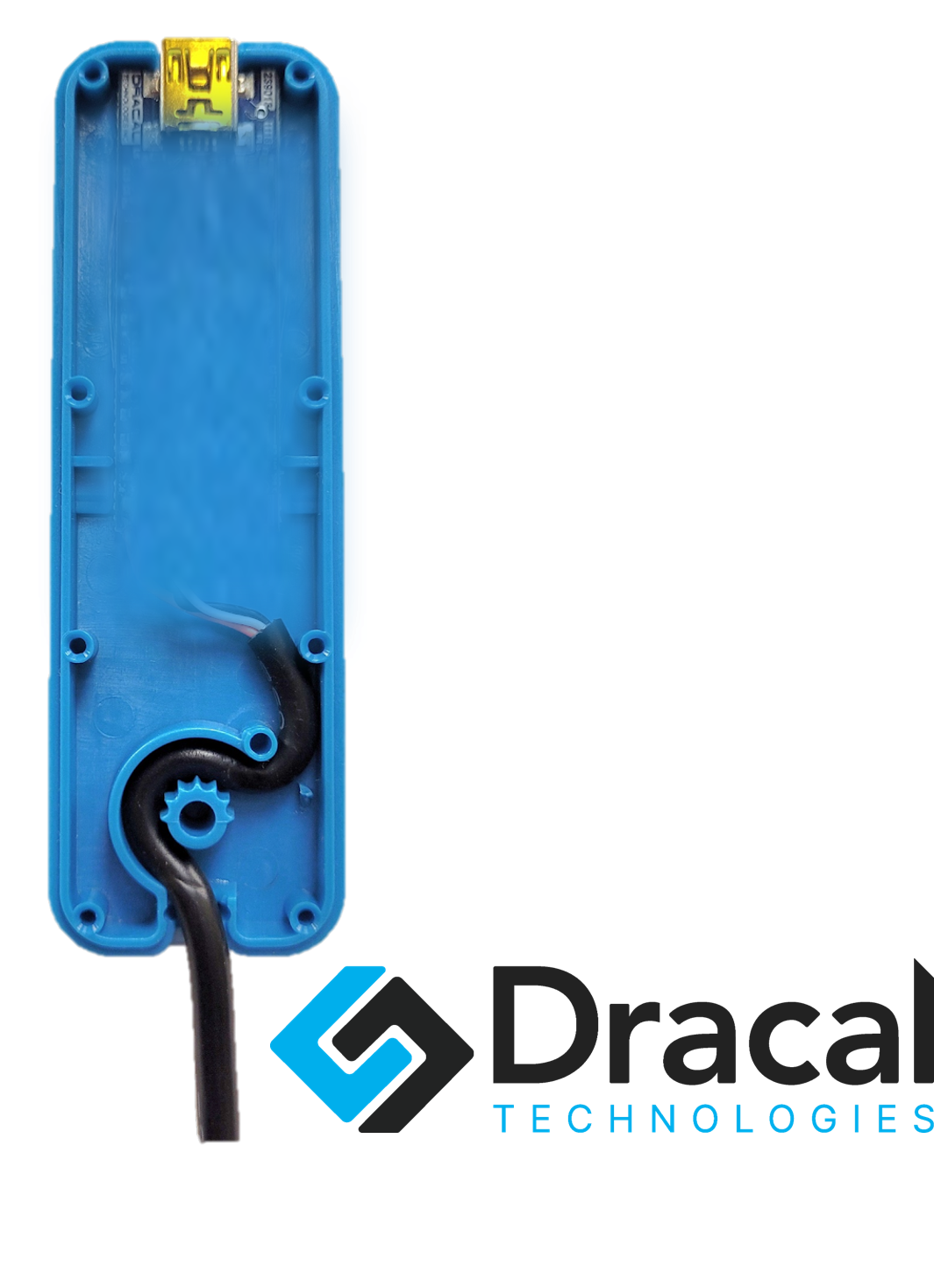What is robustness, and how is it implemented in Dracal?

-
- Introduction
- 1. What is Robustness?
- 2. Mechanical Robustness
- 2.1 Component Selection
- 2.2 Assembly Process
- 2.3 Design and Durability of Enclosures
- 2.4 Probe Design
- 3. Electrical Robustness
- 3.1 Protection against Extreme Conditions
- 3.2 Protection against Electrical Fluctuations
- 3.3 Protection against Natural Drift
- 4. Software Robustness
- 4.1 System Expansion Capabilities
- 4.2 Calibration Mechanism Robustness
- 4.3 Robustness in Multi-Protocol Usage
- 4.4 Security
- Conclusion
Introduction
Manufacturers often use the term "robustness" to assure the quality of their products and solutions. But what exactly is robustness? And beyond promises, is it possible to obtain "evidence" from a manufacturer that their products and solutions are as robust as they claim?
This article aims to illustrate the kind of information to seek from a manufacturer that can help assess the real robustness of their products and solutions.
Note: Dracal is used here as an example for this exercise only. However, this article aims to highlight the type of information that can be obtained, and we encourage you to use its content as a basis for evaluating other manufacturers.
What is Robustness?
The usual definition of robustness is the ability to withstand, adapt to, and maintain reliable performance in difficult or unexpected conditions.
Following this definition, implementing robustness should involve identifying and eliminating any undesired fragility in a product or solution.
At Dracal Technologies, identifying and eliminating potential points of fragility are critical steps in developing our products. See the mechanical, electrical, and software robustness elements that have been implemented to ensure durability and exceptional performance.
Mechanical Robustness
2.1 Component Selection
Dracal Technologies measurement instruments are composed of various parts and components. Each one is carefully chosen based on several criteria, including reliability, place of origin, and longevity.
During product design, we also ensure that the components are used at less than 70% of their nominal capacity to extend their lifespan.
Similarly, we opt for components that can withstand conditions beyond the maximum operating conditions of our products.
2.2 Assembly Process
Dracal products are fully assembled in Canada, ensuring maintenance and quality control.
Furthermore, the assembly is carried out in such a way that the wires will never be exposed at the junction of a connector.
2.3 Design and Durability of Enclosures
Dracal enclosures are custom-designed for our products. The instrument's PCB is housed in a sturdy enclosure that it is virtually impossible to break, even under very harsh conditions.
Our enclosures are dustproof and resistant to other contaminants.
The exclusive design of the Dracal enclosure securely holds the wired elements and connectors of the instrument to protect their connections.
Here is an example of a wired probe and the mechanism preventing the wire from being damaged.

The connectors of the universal converters (RTD or TMC) also have multiple locking mechanisms to ensure they stay in place.
In the case of the DXC220 CO2 reader, the enclosure is completely waterproof. Although this instrument is not intended for measuring CO2 in water, it can tolerate being submerged, with an IP68 protection rating, allowing its use in locations with humidity levels reaching 100% for extended periods.
2.4 Probe design
Here, since the requirements vary from one application to another, we offer different options in terms of probe robustness to adjust to different customer needs and budgets. In some extreme cases of OEM integration, the probe is not protected at all (TRH200, TMP125) to maximize the proximity between the measuring point and the sensor.
The TRH series illustrates the available options for probe robustness: TRH200 - TRH320 - TRH450.
| Photo | Type |
|---|---|
 |
Aluminum |
 |
PET mesh |
 |
None |
The TRH200 has an exposed sensor, while the TRH320/TRH420 have a probe covered with abrasion-resistant mesh.
As for the TRH450, it has a specially designed aluminum probe. In fact, the aluminum probe of the TRH450 is so robust that a weight of 454 g was suspended from the probe at a temperature of 120°C for 8 hours without any issues (n=5, internal data).
Lastly, both the TRH320 and TRH450 probes can be wetted and still function after drying.
3. Electrical robustness
3.1 Protection against Extreme Conditions
The electronic boards (PCBs) of Dracal instruments are protected against electrostatic charges.
A layer of specially designed product is applied to all our PCBs, forming a water-resistant barrier between the environment and the circuitry, providing increased protection against moisture. This ensures that the devices are protected against rust, corrosion, and oxidation.
3.2 Protection against Electrical Fluctuations
All our instruments are equipped with mechanisms to protect against potential electrostatic discharges and electromagnetic interference and to ensure electromagnetic compatibility between them.
3.3 Protection against Natural Drift
All sensors have a slight natural drift that occurs over time. This is part of the normal aging process. Since the drift is more significant at the beginning of use and stabilizes over time, we power all our instruments for several weeks before making them available. This minimizes the difference between the measurement obtained from the first use and the measurement over time.
With a calibratable instrument, you can also correct the accuracy of the measurement over time to achieve the desired precision.
Of course, the mechanical protections discussed earlier also help limit the drift phenomenon.
4. Software Robustness
4.1 System Expansion Capabilities
You can start with a single Dracal USB sensor and then add other instruments of any type. The expansion is limitless, limited only by your system's memory (computer or server). Adding instruments will not affect the operation of the devices already in place.
With the SensGate, extending your measurement system to remote locations is possible. The software used by the SensGate is fully compatible with basic software tools, making system expansion very easy.
4.2 Calibration Mechanism Robustness
The calibration points the user enters are directly saved on the measuring instrument. They follow the precision desired by the user and are independent of the unit in which they were recorded.
The complexity of calculations in a 3-point calibration mechanism must also preserve the measurement's accuracy. Thus, how the mechanism is implemented ensures an accuracy of 6 significant figures, covering the entire precision range of all Dracal instruments.
4.3 Robustness in Multi-Protocol Usage
The communication mode used with the instrument (USB, VCP, Wi-Fi) does not affect the measurement accuracy, whether calibrated or not. Therefore, the accuracy of the data returned is verified and guaranteed in all modes. Even in VCP mode, calibration calculations return accurate data with 6 significant figures.
The user experience should also be robust regardless of the communication mode. For example, integration tools for USB (dracal-usb-get) and SensGate (dracal-sensgate-get) are interchangeable. Additionally, the main tool, DracalView, handles instruments equally, regardless of the communication mode (USB, VCP, Wi-Fi), with one exception: Under Windows only, due to the operating system's architecture, DracalView and dracal-usb-get do not recognize instruments in VCP mode.
4.4 Security
Security is also a crucial aspect of software robustness. A robust software should be designed to resist attacks and known vulnerabilities. It should implement appropriate protection mechanisms to prevent security breaches and maintain data integrity.
Dracal solutions are safe for the user. For security purposes, the SensGate does not offer any routing capability and allows users to protect access with a secure password.
Conclusion
We have demonstrated that it is possible for a manufacturer to concretely justify why and how their products and solutions are robust. If you believe that certain robustness aspects have been overlooked, we would be delighted to enhance this overview with your recommendations. Any manufacturer committed to offering you the best product will be pleased to answer your questions regarding the robustness of their offerings.